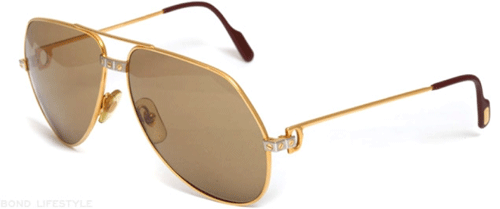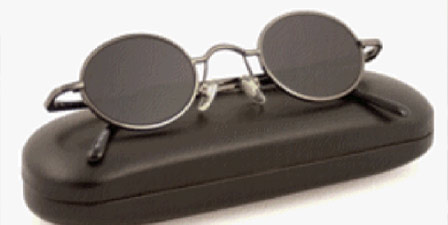My friend Phil Nobile, Jr., is probably one of the most interesting people I know. The current editor-in-chief of the venerable horror movie magazine Fangoria, he’s also worked as a journalist, TV and film producer, and—most pertinent to this article—he’s one of the world’s foremost experts on the world of James Bond, having written dozens of critical and scholarly articles on the film and book series. So it was no small honor when Phil recently sought me out to help him solve a personal Bond mystery—what frames does Christopher Walken wear in his role as Max Zorin, the villain of Roger Moore’s final film in the franchise, A View to a Kill?
I’ll admit, Phil brought me a lead—an online auction was claiming that the frames were the Cartier Vendome Santos model. Could I confirm that these were the frames in question, though? He wanted to buy a pair for a friend, and didn’t want to make the investment in something that wasn’t screen accurate; and not being a glasses man himself, he wanted someone who knew the optisphere to investigate and make sure.
Studying a variety of screen captures quickly confirmed for me that the sunglasses Walken wears are in fact the Cartier Santos. They’re a unique pair of frames that’re unlike many other aviators out there: Though the interior of the frames curve in the classic teardrop shape, the temporal corners moving towards the brow bar are slightly angled rather than smooth. Too, they have a thick bridge with striation detailing, a hallmark of frames from the latter 70s and 80s.

photo © 1stdibs.com
The frames are also interesting from a critical standpoint. I’ve written before about what an aspect of an individual’s identity eyewear can be, and I’ve discussed how filmmakers have used eyewear to convey different things about characters. As an evil industrialist—Zorin is the Bond universe’s equivalent of the “Evil 80s Businessman” that popped up in seemingly every piece of media during the decade from Twin Peaks to Wall Street to countless teen comedies—it makes sense the character would both buy the finest things available to him and also want to flaunt his wealth. A venerable brand name, Cartier would easily appeal to a personality like Zorin’s, while the gold frames allow him to flash some conspicuous consumption. (Perhaps by coincidence, Michael Douglas also wears the Santos in his role as Gordon Gekko).
After an hour or so of studying screen captures and photos of the Santos, I was able to confirm for Phil that they were indeed Zorin’s frames. As of press time I haven’t heard yet whether he’s purchased the frames, though if he does, he’s told me he’ll be bringing them to Texas on his next visit for me to give a final, in-person authentication before he presents them to his friend. Perhaps not my greatest achievement, but, a bit of a fun little optical adventure and a demonstration that optical knowledge can be applied in a number of unanticipated and interesting ways.
Learn how to better merchandise and communicate about frames for all facial shapes and needs with our CE, There’s a Hole in Your Frame Board, at 2020mag.com/ce.













